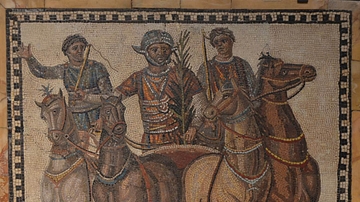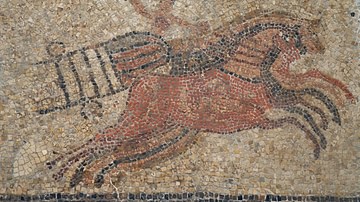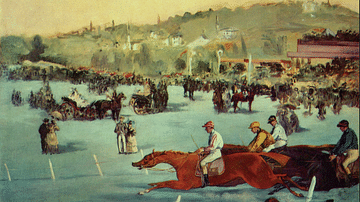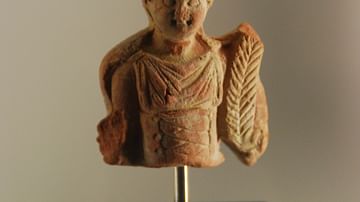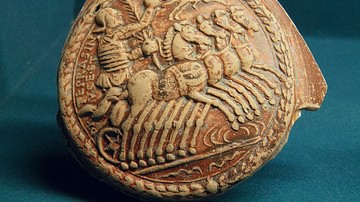Illustration
Marble bust is of a young, successful, and wealthy charioteer, part of a group of seven busts discovered in 1889 during the construction of Trastevere train station in Rome; located on the eastern slopes of Monteverde Hill, called Horti Caesari in Roman times.
This and the six other busts were found set on marble pillars in a sanctuary sacred to Hercules. Romans considered Hercules to be the protector of victories in sports and competitions. The charioteer is wearing a tunic held on the right shoulder by a clasp, a fibula. The charioteer's hairstyle, with its shaped curls, is inspired by the young Domitian (81-96 CE).
Museo Nazionale Romano, Palazzo Massimo, Rome.
About the Author
Cite This Work
APA Style
McCormack, L. K. (2024, June 05). A Young Charioteer. World History Encyclopedia. Retrieved from https://www.worldhistory.org/image/19041/a-young-charioteer/
Chicago Style
McCormack, Laura K.C.. "A Young Charioteer." World History Encyclopedia. Last modified June 05, 2024. https://www.worldhistory.org/image/19041/a-young-charioteer/.
MLA Style
McCormack, Laura K.C.. "A Young Charioteer." World History Encyclopedia. World History Encyclopedia, 05 Jun 2024, https://www.worldhistory.org/image/19041/a-young-charioteer/. Web. 25 Apr 2025.



